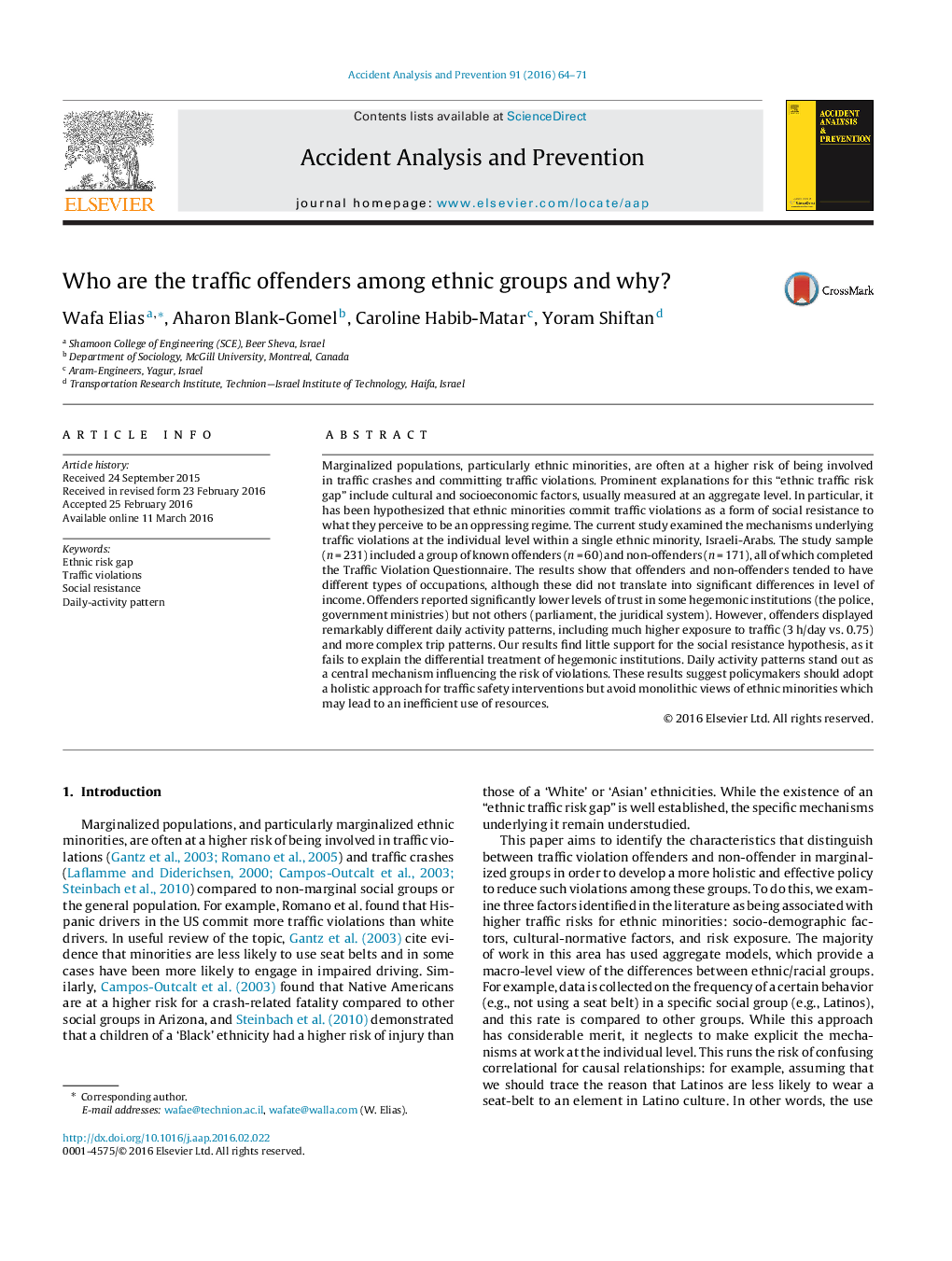| Article ID | Journal | Published Year | Pages | File Type |
|---|---|---|---|---|
| 571981 | Accident Analysis & Prevention | 2016 | 8 Pages |
•Marginalized groups are often at a higher risk for traffic violations and crashes.•We compare law abiding and offending drivers from a marginal group.•Both groups share a similar level of trust towards the hegemonic culture.•Offending drivers are much more likely to have a different daily activity pattern.•Our findings support a structural explanation over the notion of ‘social resistance’.
Marginalized populations, particularly ethnic minorities, are often at a higher risk of being involved in traffic crashes and committing traffic violations. Prominent explanations for this “ethnic traffic risk gap” include cultural and socioeconomic factors, usually measured at an aggregate level. In particular, it has been hypothesized that ethnic minorities commit traffic violations as a form of social resistance to what they perceive to be an oppressing regime. The current study examined the mechanisms underlying traffic violations at the individual level within a single ethnic minority, Israeli-Arabs. The study sample (n = 231) included a group of known offenders (n = 60) and non-offenders (n = 171), all of which completed the Traffic Violation Questionnaire. The results show that offenders and non-offenders tended to have different types of occupations, although these did not translate into significant differences in level of income. Offenders reported significantly lower levels of trust in some hegemonic institutions (the police, government ministries) but not others (parliament, the juridical system). However, offenders displayed remarkably different daily activity patterns, including much higher exposure to traffic (3 h/day vs. 0.75) and more complex trip patterns. Our results find little support for the social resistance hypothesis, as it fails to explain the differential treatment of hegemonic institutions. Daily activity patterns stand out as a central mechanism influencing the risk of violations. These results suggest policymakers should adopt a holistic approach for traffic safety interventions but avoid monolithic views of ethnic minorities which may lead to an inefficient use of resources.
